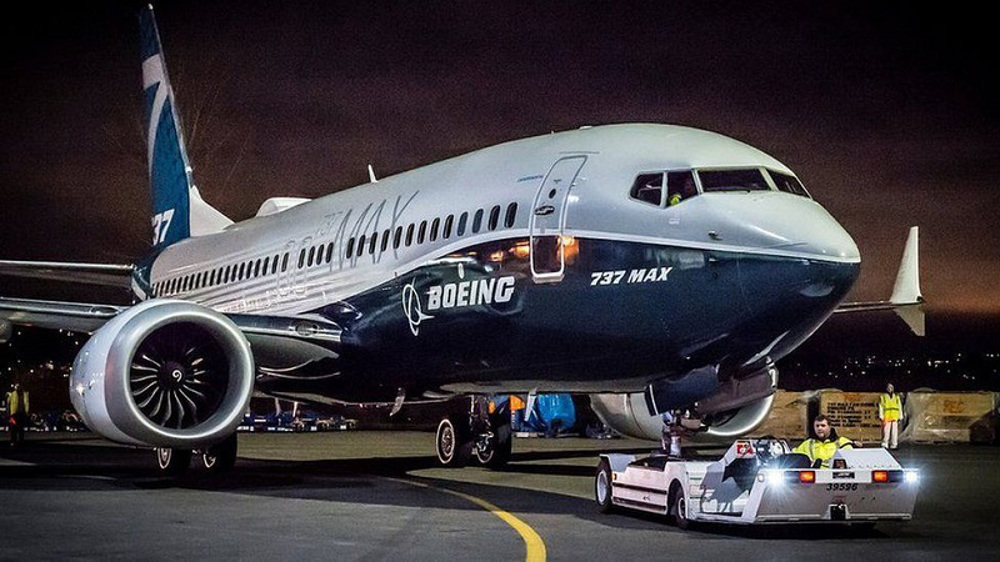New electrical flaw grounds over 60 737 MAXs, adding to Boeing’s woes
A minor change in Boeing's 737 MAX manufacturing process that was insufficiently vetted caused an electrical system problem that on Friday temporarily grounded more than 60 of the aircraft — out of almost 200 MAXs that have returned to service since December.
While this latest manufacturing flaw is unrelated to the flight-control system implicated in two fatal crashes that grounded the MAX for nearly two years, it slows the positive momentum that had begun to build as more MAXs took to the air and new orders came in from United, Alaska and Southwest.
The problem, according to two people with knowledge of the modified manufacturing process, arose when a backup electrical power control unit was secured to a rack on the flight deck with fasteners — in place of the rivets previously used.
This change was executed in such a way that it did not provide a complete electrical grounding path to the unit. The lack of secure electrical grounding could potentially cause malfunctions in a variety of electrical systems, such as the engine anti-ice system and the auxiliary power unit (APU) in the plane's tail.
Boeing said it discovered the issue "on a production airplane during normal build activity" and that inspections are needed to verify "that a sufficient ground path exists" for this control unit.
The Federal Aviation Administration (FAA) said Boeing notified it late Thursday that it was recommending certain MAX airplanes be temporarily removed from service.
After Boeing informed airlines late Thursday evening, Southwest grounded 30 of its MAXs. American grounded 17, and United 16.
Boeing said 16 customers worldwide are affected.
FAA spokesperson Ian Gregor said Boeing's manufacturing switch from rivets to fasteners was "a minor design change" that did not require approval by either the federal safety agency or the internal Boeing organization that represents the FAA and assures compliance with regulations.
Another 737 Stabilizer Problem
This latest problem adds to the long litany of missteps currently afflicting Boeing.
Manufacturing flaws have grounded more than 80 of the widebody 787 Dreamliners for months; design flaws mean the vision system on the Air Force's KC-46 military aerial refueling tanker must be completely revamped; and quality issues have delayed the Starliner spacecraft program.
And in a previously unreported problem, Boeing recently found a potential defect in a batch of 20 to 40 motors that move the horizontal stabilizer on all 737s, including the MAX and earlier models.
This motor — manufactured by Eaton, a supplier headquartered in Ireland — is part of the system that pitches the airplane nose up or nose down. Boeing said seven of the aircraft with a stabilizer motor from the defective batch are MAXs.
Boeing spokesperson Jessica Kowal said the defect potentially affects the reliability of the component.
The motor "has been replaced in five of the MAXs already and the remaining two airplanes will have the parts replaced before they fly again," she said.
Kowal said Boeing is continuing "to evaluate any potential impact to the 737 NG fleet."
American Airlines spokesperson Sarah Jantz said two MAXs in its fleet had their stabilizer motors replaced as a result of Boeing's directive, although neither had experienced any issues. (Both those fixed MAXs are now grounded by the new electrical power control unit problem.)
The failure of a stabilizer motor is a rare inflight issue. Dealing with it requires pilots to use the manual wheel in the cockpit to trim the aircraft's pitch.
Coincidentally, an inflight stabilizer problem that required manual trim to get a 737 MAX home safely happened just last week — but with a different root cause.
On March 29, an American Airlines 737 MAX, flying from Miami to Santo Domingo in the Dominican Republic with 135 passengers and 6 crew aboard was forced to turn back when the horizontal stabilizer system failed.
The pilots ran the stabilizer checklist, manually trimmed the aircraft as they returned to Miami, and landed safely.
This incident was not related to the Maneuvering Characteristics Augmentation System (MCAS) flight control software implicated in the two MAX crashes. Nor was it the recently identified stabilizer motor problem.
Jantz of American Airlines said the fault this time was in an electrical relay switch controlling the stabilizer motor. American afterward replaced the relay switch.
When FAA Administrator Steve Dickson signed the order that cleared the way for the MAX to return to service, he noted that routine in-flight problems would likely cause excessive concern if on a MAX.
"It is inevitable that at some time in the future, a Boeing 737 MAX will turn back to its originating airport, divert, or land at its destination with an actual or suspected in-flight problem," Dickson said then. "While these events can be inconvenient and unsettling to passengers, they occur virtually every day."
US Airlines Deal with the Latest Problem
Nevertheless, the sheer accumulation of manufacturing, design and quality problems at Boeing over the past two years has badly damaged its reputation for technical excellence.
The production change that produced the latest electrical system problem for the MAX was made after the original grounding of the jet in March 2019, so only planes built after that are affected. Southwest has 28 MAXs without this issue, United has 14 and American 24 — all still flying.
On Friday, Chris Hurrell, American's 737 fleet captain, said in a message to the airline's pilots that its "MAX fleet has not experienced any abnormalities" as a result of the manufacturing process change.
Nevertheless, David Seymour, chief operating officer at American, told staff in a memo that "at Boeing's direction, we have temporarily removed these 17 aircraft from service."
Seymour said the grounding of 17 MAXs will bring "operational challenges — rerouting crew members, customers and aircraft, schedule changes and supporting our customers."
United said it is "working to swap out aircraft to minimize the impact to our customers" and is working with Boeing and the FAA "to determine any additional steps that are needed to ensure these aircraft meet our rigorous safety standards."
Southwest spokesperson Brandy King said that airline, too, "has not experienced any known operational challenges related to the issue."
And because Southwest is currently operating a limited MAX schedule of 44 daily flights, with no more than 15 aircraft scheduled to fly each day, it expects "minimal operational disruption as we have spare aircraft in our system."
No timeline is yet available for the grounded MAXs to return to service.
"It is too soon to estimate timing," said King. "We are awaiting further guidance and the corrective fix from Boeing."
Source: Seattle Times
VIDEO | Gaza’s hospitals face collapse as shortages halt surgeries
At least 5 killed in terrorist attack on mosque in Syria’s Homs
Israeli airstrikes hit eastern, southern Lebanon in fresh ceasefire breach
Japan approves record defense budget amid tensions with China
VIDEO | Press TV's news headlines
Iran to confiscate $5mn seized tanker, fuel cargo in favor of government: Official
US launches airstrikes on Nigeria, citing unsubstantiated claims of anti-Christian violence
Israel ‘will never leave’ Gaza Strip, its war minister says










 This makes it easy to access the Press TV website
This makes it easy to access the Press TV website